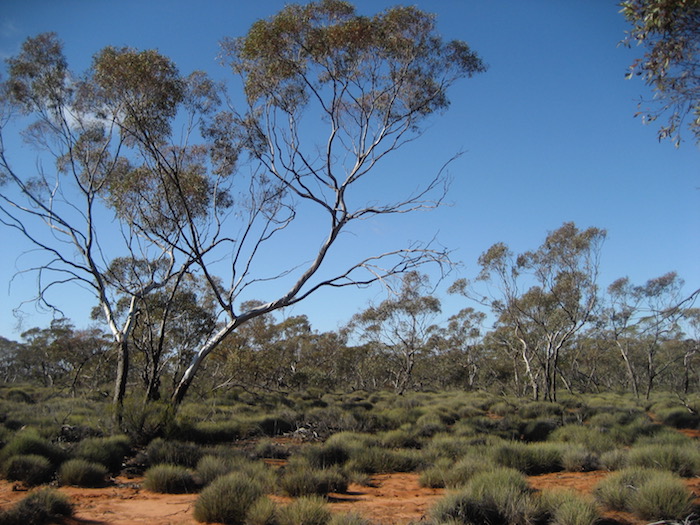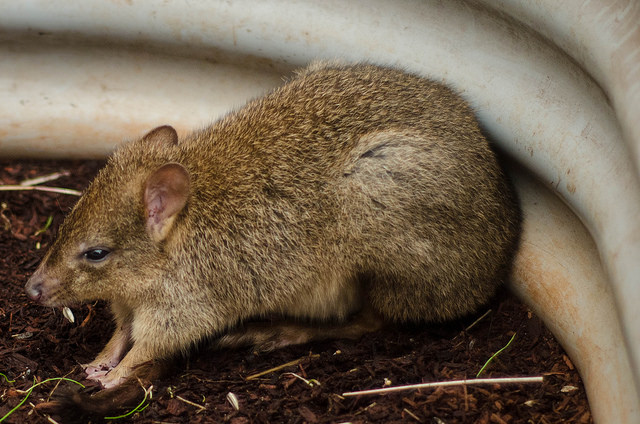
Daniel Pauley, a fisheries scientist, coined the term “shifting baselines” in 1995 to describe how depleted fish populations came to be considered “normal” by generations that had never experienced the teeming abundance their grandparents had known.
The concept is now a fundamental one in conservation. As ecosystems change and as human memory dims, former states are forgotten and newer, altered states come to be considered the baseline against which change should be measured and to which restoration should aim. This can mean that, for example, one generation insists that a park “should be” a dense forest because that is how it appeared in their youth—thanks to the fact that elephants had been driven locally extinct. (Elephants browse so ferociously and even knock over full-grown trees, keeping landscapes in savannah-mode.)
Now a new paper looks at shifting baselines in the Australian Outback, where ants have long thought to be the primary way seeds move around the landscape. Turns out that the role of small, adorable mammals in seed moving may have been overlooked because these creatures have been hit so hard by introduced predators, including cats and foxes.
I was excited to see the study published, because years ago I visited the field site where the work was done—Scotia, a conservation reserve run by the Australian Wildlife Conservancy in southwest New South Wales.
Scotia has fences to keep out cats and foxes. As a result, rare native species thrive inside, including the bridled nail-tailed wallaby (Onychogalea fraenata); the numbat (Myrmecobius fasciatus) a striped creature of great beauty; the greater bilby (Macrotis lagotis) something like a needle-nosed bunny; and the woylie (Bettongia penicillata ogilbyi), also known quite aptly, as the rat-kangaroo.

Charlotte Mills and Mike Letnic of the University of Sydney set out trays of seeds of two local shrub species, Acacia ligulata and Dodonaea viscosa subsp. angustissima. The acacia seeds feature eliaosomes—tasty little nubbins of food appealing to ants on the outside of the seed. Ants pick up the whole seed, take it to their nests, eat off the eliaosome, and then discard the seed, often in a trash heap of ant poop and other debris that makes ideal compost. Some seed trays were fenced so the mammals could not access them. Others were ringed with insecticide to keep ants away.
When they went back to check the trays, they found that woylies had removed both types of seeds from the trays ants could not reach year round, while ants removed seeds that the woylies could not reach only during the summer.
So perhaps mammals were once even more important than ants in moving seeds around arid Australia. The authors conclude that “granivorous mammals may once have been the dominant consumers and removers of seeds across the vast areas of arid Australia where they are now rare or extinct and that their presence or absence may have far-reaching ramifications for seed fate.” Mammals are more likely to eat the whole seed and destroy it, not settling for the eliaosome alone. So perhaps more seeds germinate now than formerly?
Shrubs growing in Australia today may be arranged on a landscape in a different way than they would be had they been dispersed by woylies and native rodents. Who knows how different the landscape might have looked?
Scotia is a beautiful place, dotted with trees garlanded with long peeling bark, its sandy soil hosting eerily circular growths of spinifex grass. It is a dry place, a hard place to live. I look at the pictures of it I took those years ago and I wonder how much of what I am seeing is the botanical expression of the population crash of so many Australian mammals. Like so many other landscapes, it has changed because of human influence, and probably more than once. Some believe that whole fire-adapted ecosystems of arid Australia are artifacts of Aboriginal people’s burning practices.
People sometimes use the phrase “shifting baselines” to suggest that what was thought to be the original condition was actually a human-created state of affairs—but not to challenge the notion that there was an original condition. In Australia, where people go back 50,000 years, it makes little sense to talk about any “original” condition at all. Indeed, ecosystems around the word are and always have been dynamic, changing over the millennia with or without human influence.
Nevertheless, knowing the history of those changes is enormously helpful in planning restoration or conservation actions. The more we know about how these rare creatures interacted with their ecosystems, the more likely we are to be able to re-establish them across the country. Perhaps someday we will be the old codgers who remember a poorer and less diverse natural world than our children. Perhaps baselines will have shifted for the better.